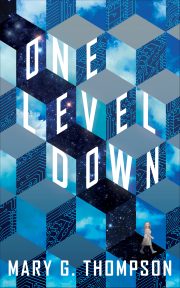How to Kill Your Imaginary Friends: When Your Audience Might Know More Than You Do
“My mother has rheumatoid arthritis, and there’s no way she could pick a lock like your character did in chapter twelve!”
“There was an article on that exact condition in the March 2003 issue of the New England Journal of Medicine, and it said that. . .”
“Dude. I don’t know much about osteogenesis imperfecta. . . but “osteo” means “bones”, and you’re talking about the kid’s pancreas. . .”
Using real-world diseases in a work of fiction has a large number of potential pitfalls. Here are a few tips about how to make your pestilential plot point a little more plausible.
Research is your friend.
If you’re going to use a specific, known disease in your story, seriously consider doing a fair amount of research. Chances are, some of your readers will have that condition, or their mothers will, or they’ll be physicians or nurses or physical therapists, or other people who know their stuff. They’ll know if you’re making things up, and they won’t hesitate to call you on it. It might seem like a lot of extra work to make sure you don’t lose those readers, but in my opinion, it’s worth it.
If you’re not swimming in spare time that you can use for research, though, there are a couple of tricks to help you avoid the otherwise-nearly-inevitable eye-rolls.
Start from the symptoms, then mix-and-match.
You need your character to have trouble breathing. You need a vague, plausible disease process to serve this plot point, but that’s all you need; the story itself is elsewhere.
(1) Pick an organ system.
Points to you if you picked the lungs. Bonus points if you also thought of the heart! (I plan to do a series of posts on the various organs and what they do, but it’s probably going to take a while.) Let’s go with the lungs, for now. Disease-of-the-lungs = breathing problems. Good. Plausibility meter just ticked up a notch.
(2) Pick a disease type.
What you choose for this will depend on the way you need the disease to act.
Let’s say that based on your story, your character needs to develop their lung condition slowly, and the lungs need to degenerate in a way that can’t be cured, just delayed. You’d probably want to go with an autoimmune disease for that one. Autoimmune-disease-of-the-lungs. Okay. Another tick of the plausibility meter.
(I’m also planning a series of posts on disease types [infection, mechanical injury, autoimmune, cancer, etc.] and how they generally act as a class. But if you’re in a rush and can’t wait for me to churn those puppies out, find your nearest friendly medical library; the librarians there will probably be able to help you out. Medical librarians rock. Shout-out to medical librarians!)
(3) Wave your hands in a distracting manner.
You’re a writer. You know how to do this. You have a character with an autoimmune disease of the lungs. Now dazzle your audience with your shiny description of his struggle to become a world-class athlete before his lungs crap out on him! Good job; most people will now read right through, because there’s nothing silly, easily disproven, or pseudo-medical in your prose that will snag their attention away from the story you’re telling.
If you have a disease in mind, but it’s not exactly right. . . back off on the specificity.
If you’re too specific with the disease you’re using, you’ll run into a couple of problems if you start taking liberties.
(1) Your knowledgeable readers will roll their eyes at unexpected things.
Reader- “Hey, I have Parkinson’s, and I haven’t been able to get up out of a chair on my own for five years! There’s no way he would be able to get out of the house in time!”
(2) You’ll spend way too much time describing how your character’s disease differs from the actual disease.
Author- “Yeah, it acts just like Guillain-Barré Syndrome, but it develops slowly, over a period of years and she was born with it instead of contracting it from. . .”
Reader- ::snooze::
Very few people will fault you (or probably even notice) if you take some small liberties with a disease process in your work of fiction. As long as you stay as close to plausibility as possible, you can mold the disease to fit the story. But the more you play with a specific process, the more chances you have to really get your facts wrong. People can only suspend their disbelief so far before the suspension cable snaps.
If you’re going to play with the disease process, consider avoiding the actual disease-name-drop. Vagueness can be your friend, in certain circumstances. But don’t cross the fine line that separates artistic-licensed vagueness from information-withholding. You’ll lose readers that way, too.
Information-dumps will get you in trouble.
If you don’t know much about the disease, your info-dump will be a minefield. Avoid the temptation to describe what you think is going on in your character’s body. Focus instead on the symptoms he experiences, and his reactions to them. And make sure everything you say moves the story forward in some way.
If you do know a lot about the disease, your info-dump will be a quagmire. Avoid the temptation to describe the biochemical anomaly in loving detail. You’ll lose your entire audience, even people like me who love this kind of thing. Maybe you’ll be a little safer if you write hard sci-fi. But I like hard sci-fi, and I still want things to move along while I’m getting my recommended daily allowance of awesome-science-idea.
All in all, it’s best to know what you’re talking about. Research is key. But sometimes it’s not possible, or the plot point is too small to justify the time it would take. At that point, I hope that these tips will help you get on with your story.
Picture: www.icanhascheezburger.com
 The contents of this site, such as text, graphics, images, and other material contained on the Site (“Content”) are for informational purposes only. The Content is not intended to be a substitute for professional medical advice, diagnosis, or treatment. Always seek the advice of your physician or other qualified health provider with any questions you may have regarding a medical condition. Never disregard professional medical advice or delay in seeking it because of something you have read on this Site!
The contents of this site, such as text, graphics, images, and other material contained on the Site (“Content”) are for informational purposes only. The Content is not intended to be a substitute for professional medical advice, diagnosis, or treatment. Always seek the advice of your physician or other qualified health provider with any questions you may have regarding a medical condition. Never disregard professional medical advice or delay in seeking it because of something you have read on this Site!
If you think you may have a medical emergency, call your doctor or 911 immediately. This blog does not recommend or endorse any specific tests, physicians, products, procedures, opinions, or other information that may be mentioned on the Site. Reliance on any information provided by this blog, or other visitors to the Site is solely at your own risk.
The Site may contain health- or medical-related materials that are sexually explicit. If you find these materials offensive, you may not want to use our Site. The Site and the Content are provided on an “as is” basis.
If you do use this as if it were real medical information, I will stand by your bed and describe a biochemical anomaly in loving detail. I will adjust my volume according to your depth of sleep.
—
Reprinted with permission from When Your Audience Might Know More Than You Do by Dr. Grasshopper.



